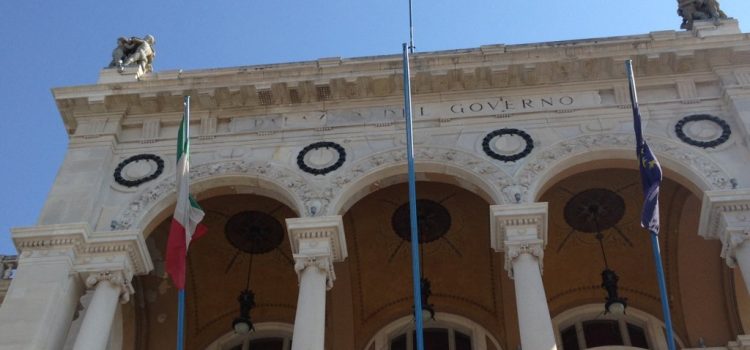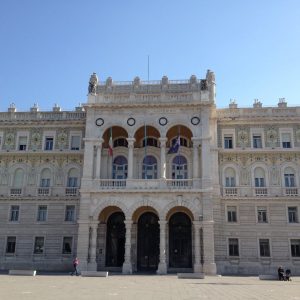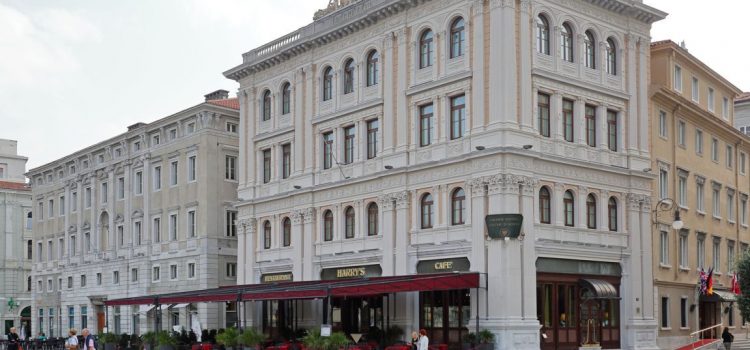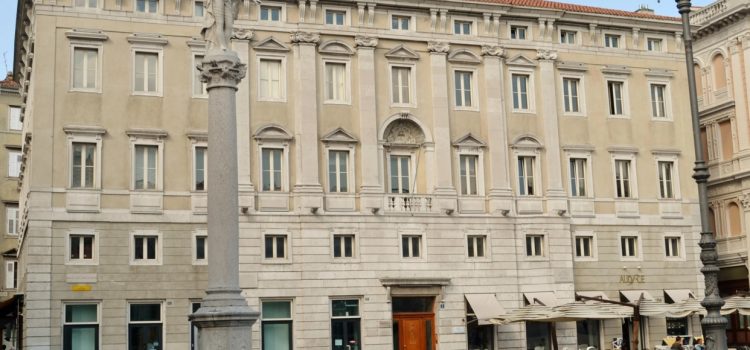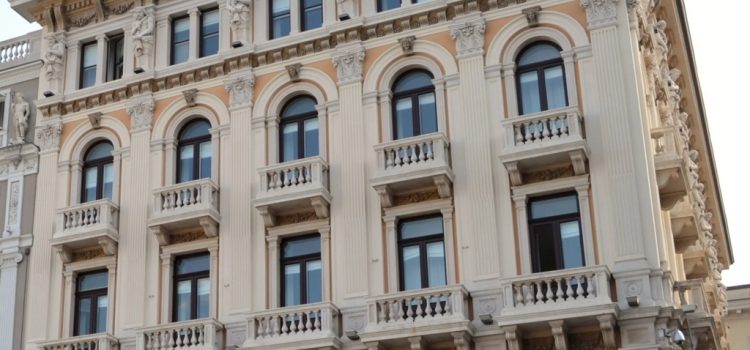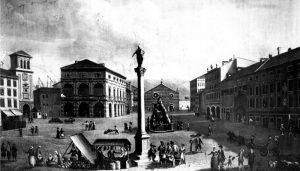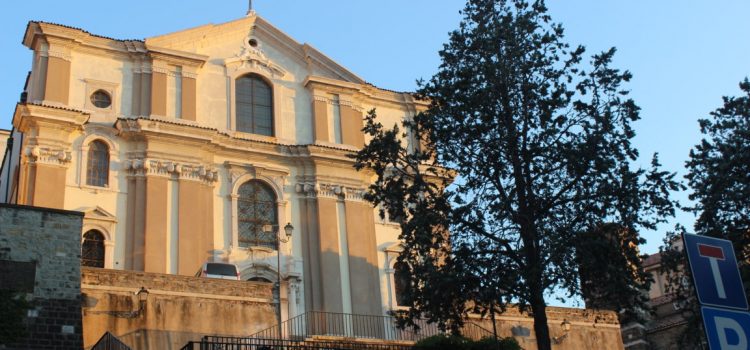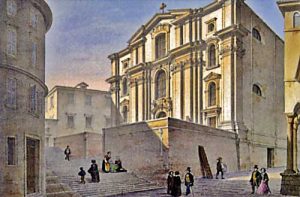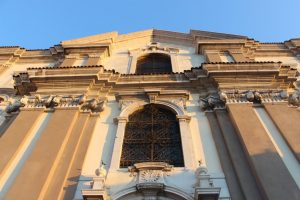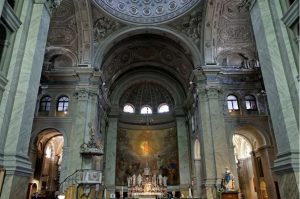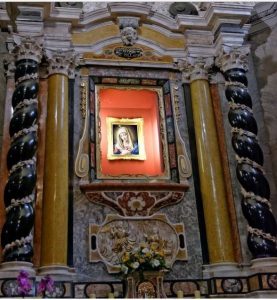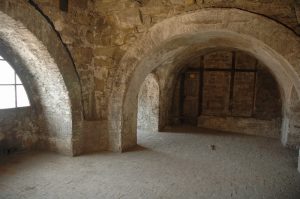IL PALAZZO DEL GOVERNO – PIAZZA UNITA’ D’ITALIA – TRIESTE
Built between 1901 and 1905, inspired by the architecture of the Renaissance and the style of the Viennese Secession, designed by the Viennese architect Immanuel Artmann, it was the seat of the Austrian Lieutenancy.
It is a wonderful building embellished by a Florentine loggia with a decoration of Murano glass mosaics.
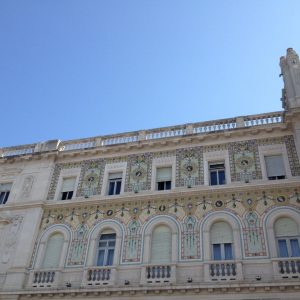
In the upper part of the external facade, facing the square, there are drawings, allegorical heads and medallions with the coat of arms of the House of Savoy made after the First World War, replacing the original mosaics, designed by Giuseppe Straka of Vienna, which featured elements of Austrian derivation . Today the building houses the offices of the Government Commissariat in the Friuli Venezia Giulia region as well as those of the Prefecture. High personalities of the State and of Foreign States, on an official visit to the city and the region, are welcomed by the large and majestic halls of national government representation.
PALAZZO VANOLI – PIAZZA UNITA’ D’ITALIA – TRIESTE
Palazzo Vanoli which is currently the site of the Grand Hotel Duchi D’Aosta, already in ancient times from the fourteenth-century “Hospitium Magnum” to the Renaissance “Locanda del Porto”, gave hospitality to foreign merchants who came to Trieste to stock up on sailors and goods .
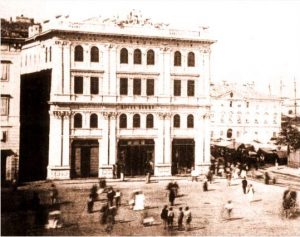
In 1700 it became the “Locanda Grande” owned by the Municipality and the main hotel in the city. The emperors Joseph II and Leopold II, Queen Maria Carolina of Naples and Admiral Orazio Nelson stayed there, among others.
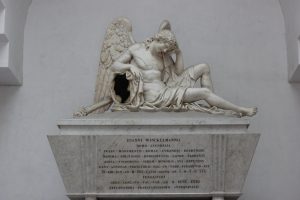 The inn was restored around 1767 by the Udine architect Giovanni Fusconi and on June 8, 1768, the archaeologist and art historian J. Winckelmann, who was staying there, was assassinated by the chef Francesco Arcangeli. The “Locanda Grande” was demolished in 1867 and in its place, in 1873, the architects Eugenio Geiringer and Giovanni Righetti built the current building with the function of hotel and restaurant.
The inn was restored around 1767 by the Udine architect Giovanni Fusconi and on June 8, 1768, the archaeologist and art historian J. Winckelmann, who was staying there, was assassinated by the chef Francesco Arcangeli. The “Locanda Grande” was demolished in 1867 and in its place, in 1873, the architects Eugenio Geiringer and Giovanni Righetti built the current building with the function of hotel and restaurant.
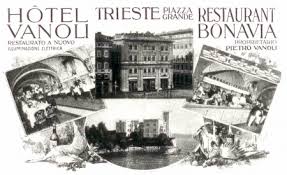
Originally it was called Hotel Garni, then Vanoli managed by the hotelier Pietro Vanoli, where in 1912 electricity was introduced. From 1972 it became the Gran Hotel Duchi d’Aosta and Harry’s Bar, owned by the Benvenuti family.
PALAZZO PITTERI- PIAZZA UNITA’ D’ITALIA – TRIESTE
The building originally housed the Piccardi houses and the Locanda Grande, accommodation for passing foreigners, then in 1780, by order of the shopkeeper Domenico Plenario, the architect Ulderico Moro designed a building in the Triestine neoclassical style with baroque influences and rococo. In 1801 the palace was bought by Giovanni Lovovitz. In 1834 the entire property passed to the scholar Riccardo Pitteri. In 1880 the Caffè Flora was opened on the ground floor at the behest of Giuseppe Mander. During the day the Café was the meeting place for the choristers of the Verdi theater, located adjacent to the Piazza, while at night it was frequented by the proletarian inhabitants of Cittavecchia. In 1982 the architects Celli and Tognon made a general renovation of the building. The building later became the property of the Lloyd Adriatico insurance company.
PALAZZO MODELLO – PIAZZA UNITA’ D’ITALIA – TRIESTE
Next to Palazzo Stratti stands the Model Building designed, on behalf of the Municipality, in 1870 by the architect Giuseppe Bruni, the same architect as the Town Hall Building.
The name Model was chosen because it had to be an architectural model for the renovation of the Piazza Grande. It occupies the place where the two churches of San Rocco and San Pietro were located at the north-east entrance of the square. The civic chapel of San Pietro during the Middle Ages was also the seat of civil justice debates and was flanked at the end of the plague in 1602 by the chapel of San Rocco. The chapel of San Pietro was demolished in 1822 and the church of San Rocco in 1869.

The Model Building was rented as an inn by the Hotel Delorme, named after its manager the Frenchman Antonio Delorme, cook of Baron Pasquale Revoltella. A prestigious hotel with rooms and apartments also for large families, toilets on each floor, restaurant and views of the square and the sea, and fairly low prices. The hotel closed in 1912 and since 2008 has housed the offices and management of Acegas-Aps, the company that manages water, gas and electricity supply services.
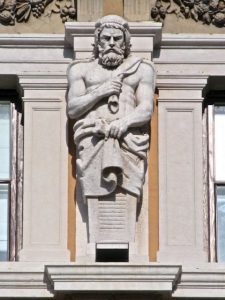 Original are the statues, the Telamons, located on the top floor, sculpted in the act of touching the genitals in a superstitious gesture.
Original are the statues, the Telamons, located on the top floor, sculpted in the act of touching the genitals in a superstitious gesture.
CHIESA DI SANTA MARIA MAGGIORE – TRIESTE
In the historic center of Trieste and a few steps from the Roman Amphitheater, on a large staircase built in 1956, stands the Church of Santa Maria Maggiore, a unique example in Baroque style among the churches of the city. The church is popularly known as the Jesuit church to remember that its construction was commissioned by the Society of Jesus, which arrived in Trieste in 1619. After the construction of the Jesuit College, in 1627, which later became an Austrian criminal prison and an Italian women’s prison, it was the first stone for the construction of a large church dedicated to the Immaculate Conception of the Blessed Virgin Mary.
The works went on for a long time and continued even after the consecration of the Church in 1682 and the suppression of the Society of Jesus in 1773. The Church after the canonical extinction of the parish of S. Giusto Martire in 1774 and due to its size and architectural beauty became one of the most important religious buildings in Trieste.
The interior of the Church is attributed to the Modenese Jesuit, perhaps a designer, Giacomo Briani, while the eighteenth-century facade to the Trentino Jesuit, painter and architect, Andrea Pozzo. Above the central door of the majestic and monumental facade, in Baroque style, a sun-shaped frieze with the letters MRA (Mary Queen of the Angels) stands out and a small Jesuit hammer is visible in the wrought iron grate below.
The interior has a Latin cross plan and is divided by two rows of pillars into three naves. The hemispherical octagonal dome was destroyed by fire and rebuilt in 1817 by Giovanni Righetti. In particular: in the left aisle there is the chapel of the baptismal font in white marble, on which stands the statue of John the Baptist and the vault of the ceiling is frescoed with scenes from the New Testament;
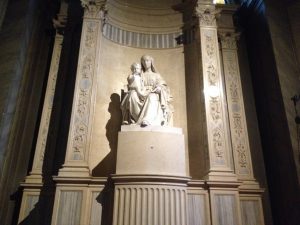
in the right aisle stands the altar dedicated to the Madonna delle Grazie erected in 1853 by Baron Pasquale Revoltella in memory of his mother Domenica; the large canvases of the Via Crucis appear on the side walls of the aisles, a work of great value by the Trieste artist Carlo Wostry; the statue of the risen Christ rests on the dome of the tabernacle of the main altar; in the apse a large tempera fresco depicts the Apotheosis of the Immaculate Conception. To the left of the main altar there is the Chapel of the Crucifix and the altar “of the Good Death”, a gift from Bishop Giovanni Francesco Mueller in 1713 and, on the left side, among the works you can see the canvas of Christ in the tomb, by Carlo Wostry of 1894.
The chapel to the right of the main altar is dedicated to the Madonna della Salute and inside is the painting of the Virgin, donated in 1841 by Domenico Rossetti. Triestines are particularly devoted to the Madonna della Salute. Since 1849, the year in which the cholera epidemic broke out in the city, every year, on November 21st, the people of Trieste gather in the Church to renew their devotion to the Madonna. Bishop Antonio Santin in 1957 wanted to place the chapel with the miraculous statue of the Madonna dei Fiori in via del Teatro Romano at the origin of the feast of 21 November. The sixteenth-century marble bust depicting the Madonna and Child was found, around 1830, by an innkeeper whose nickname was Fior and on 15 October 1849 to implore the cessation of cholera it was carried in procession and on 21 November of the same year brought back in procession by grace received.
Under the Church of Santa Maria Maggiore there are the Jesuit Undergrounds which have always attracted the attention of art scholars and mystery lovers. Authors of the nineteenth and twentieth centuries such as Pietro Kandler, Ettore Generini, Giovanni Machorsich and the collector Diego de Henriquez, took care of the basement of the college. They retraced and described them. Today the fascinating rooms of the underground can be visited in complete safety thanks to the interest of the Parish of Santa Maria Maggiore and the volunteers of the Urban Speleology Section of the Adriatic Speleology Society.









